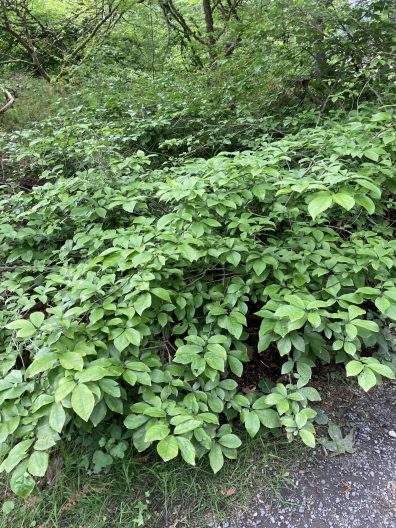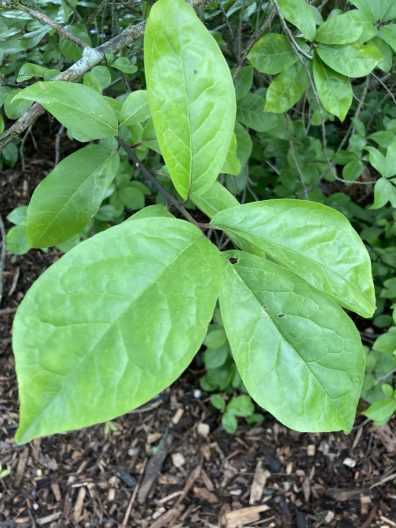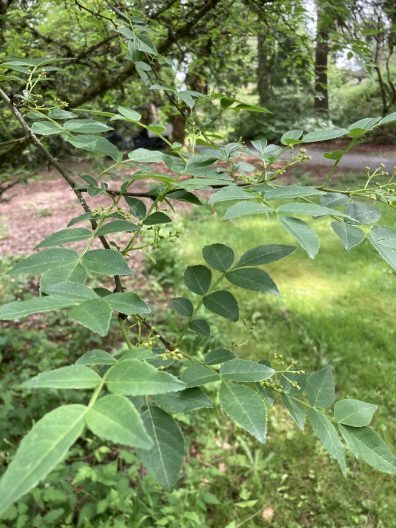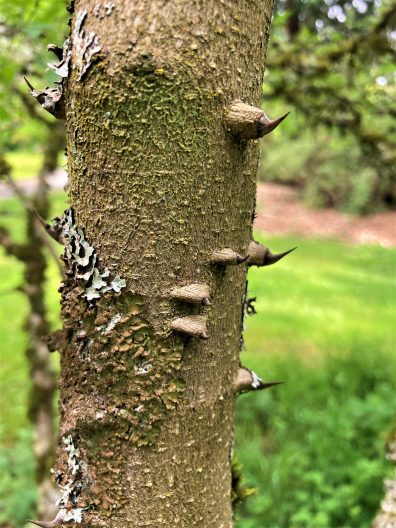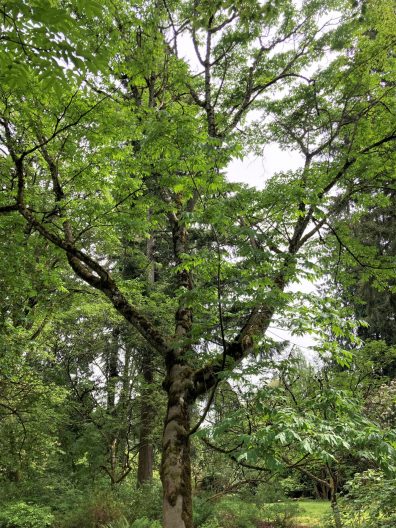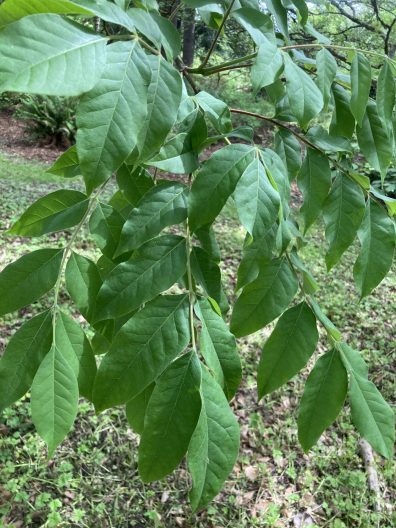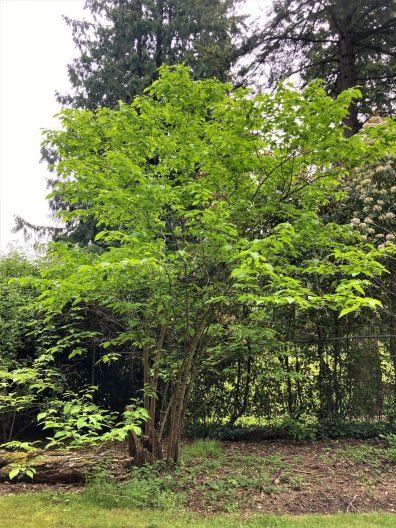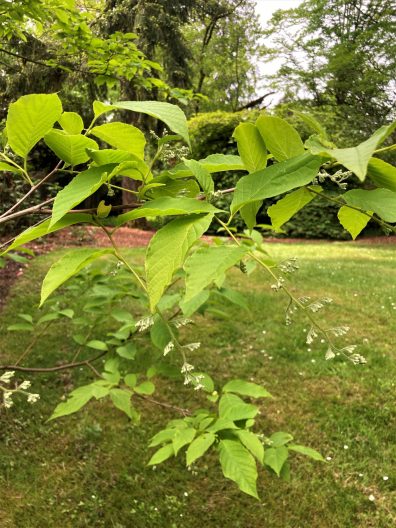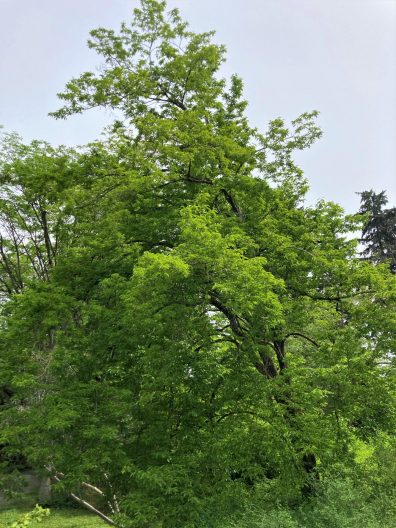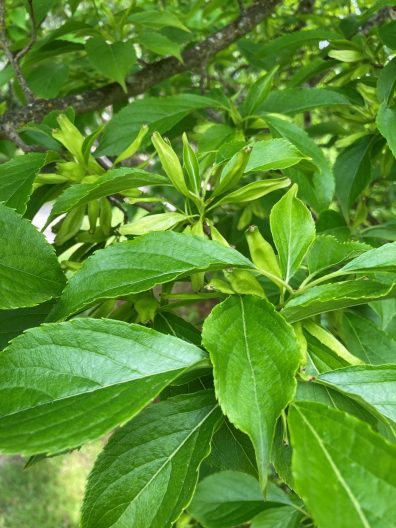Selected Plants at the Washington Park Arboretum in honor of the Monday Volunteer Group
A fantastic group of volunteers has recently spent weeks weeding blackberry and ivy out of a group of collections north of the bus turnaround and south of parking lot #4 along the easternmost trail near the Broadmoor fence. The volunteers spread many truckloads of mulch in the area to help suppress future weed growth. This post is dedicated to the Monday Volunteer Group and highlights some of the interesting plants in this area.
1) Orixa japonica Japanese Orixa
|
|
|
- This shrub from China, Japan, and Korea is in the citrus family (Rutaceae) and has pungent leaves.
- Japanese orixa is used in Chinese medicine for a range of ailments such as cough and malaria.
- Recent research has found a wide array of bioactive chemicals in all parts of this plant. Root extracts have been found to kill mosquito larvae and could lead to future use in anti-malaria campaigns.
2) Zanthoxylum simulans Sichuan Pepper Tree
|
|
|
- The red, peppercorn-like fruits of this tree are roasted and used in Chinese cuisine and have a numbing or tingling effect on the tongue.
- Formidable thorns along the trunk and branches protect the tree from browsing by large herbivores.
3) Tetradium daniellii Bee Bee Tree
|
|
|
- Native to Korea and southwestern China, T. daniellii matures to a spreading umbrella shape of 20 to 30 feet tall.
- The tree gets its common name from the fragrant white late-summer flowers which are an important food source for pollinators such as bees when few other plants are in bloom.
4) Pterostyrax hispida Epaulette Tree
|
|
|
- This tree hails from China and Japan and can reach 50 feet tall in ideal conditions, but more often matures to about 20 feet high.
- Heavy grazing by Sitka deer in the forests of western Japan have favored the Epaulette Tree, as it is not a preferred food source for them.
5) Eucommia ulmoides Hardy Rubber Tree
|
|
|
- Although the flowers of this tree are fairly inconspicuous, the unique seed pods are currently on display.
- An important plant in traditional medicine in China, Japan, and Korea, the tree is cultivated in China, but is very threatened or even extinct in the wild.
- This tree is the only species in the family Eucommiaceae, although fossil records indicate that other Eucommia species once existed throughout Europe and North America.
